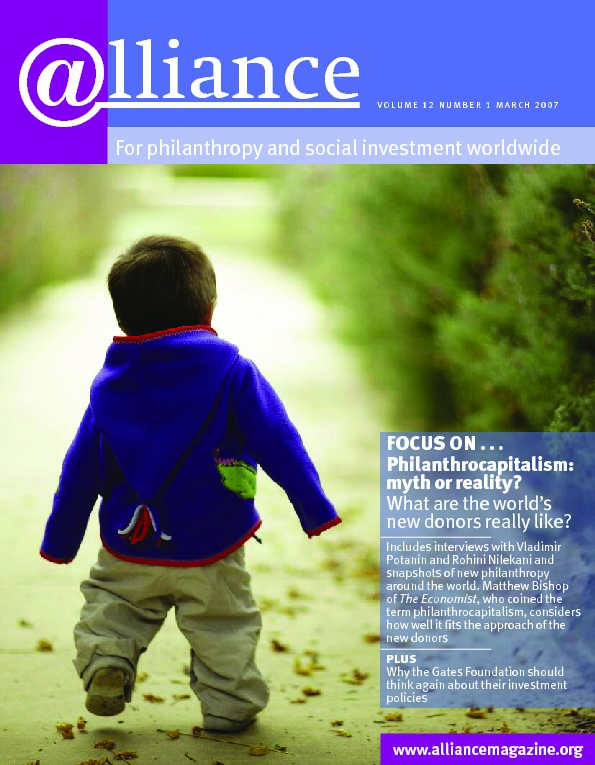‘Human nature doesn’t change in a generation. You’ve just forgotten being young,’ a world-renowned employee relations expert told a group of employers who were bemoaning how the ‘new employees’ were completely different from any previous group. ‘It’s not that people have fundamentally changed. It’s the world around them that’s changed,’ he pointed out.
That insight has relevance beyond the realm of pension plans and employee relations, of course. It’s an astute reminder that people don’t act in a vacuum. We may lose sight of the real forces shaping philanthropy if we concentrate too much on donors and too little on the world to which they’re responding.
That world has indeed changed in important ways in the span of a generation. Understanding those changes is important if real knowledge is to be captured and spread. But in some of our enthusiasm for defining the ‘new donor’, we run the risk of losing that world perspective. Human nature has not changed in the past decade, nor are new donors a new species.
At Rockefeller Philanthropy Advisors, we have the privilege of working with many types of donors across America and outside it as well: donors who are entrepreneurs; donors who have made fortunes but might not be considered entrepreneurs; donors who are inheritors; donors who are both inheritors and wealth creators. Some are members of the Second World War generation; many are baby boomers; others cannot remember a time before the personal computer.
Are the newer wealth holders and donors fundamentally different? Not really. Risk-taking, vision and an entrepreneurial approach to philanthropy are often found among inheritors – although they may not use the buzzwords of business. By the same token, there are successful entrepreneurs who cannot convert their drive and talent to effective philanthropy, even using the model of capitalism. As any venture capitalist will tell you, there are legions of entrepreneurs who cannot manage, work in partnership, or take their idea to scale.
Effective donors have always been hands on, looking beyond the transfer of cash in their philanthropy. They’ve focused on root causes, sustainability and scale as well as innovation. They have been ‘systems thinkers’ – recognizing the role of community institutions and the power of social norms (including views about matters like gender and race). They acknowledge the arc of long-term change, the importance of a broad base of support, the role of the public sector, and the power dynamic between the wealthy and their beneficiaries. Effective donors have harnessed the technologies and structures of their time for centuries.
In other words, we may be putting too much focus on the donor and too little on the world and the work. Fundamentally, it’s not the donors who have changed – it’s the world, its tools, and our beliefs about them. Those changes are profound, and it’s important to understand them, both to grasp how donors are working now and to seize the opportunities newly available for changing the world.
For the first time in our history, we have nearly unfettered access to the world through the technologies of travel and communications. Until relatively recently, donors and potential donors had to rely on intermediaries of various types to provide information and the means to act. Now direct involvement in distant locations is possible. The connection between local and distant is also much clearer, which is why donors focus more on global diseases, global warming and global poverty.
We’re also at another inflection point in history in which there’s a loss of faith in traditional large institutions – from major faiths to national governments and major multilaterals. For much of the twentieth century, philanthropy’s model of change was the transfer of successful projects and programmes from the small charitable sector to the large public sector; that was how scale and scope were obtained. Now the model seems to be a transfer to the private sector, where the capital structure offers scale and scope.
In addition to an evolving model of change, we have new ways to think about impact and accountability – not because these are new concepts but because we simply have access to more information.
Not surprisingly, as these forces influence people with substantial means, their approach to giving is changing in important ways. That’s true not only for the donors who are new to large-scale philanthropy but also for more established donors. The changes may simply be easier to see with new donors.
Melissa A Berman is President and CEO, Rockefeller Philanthropy Advisors. Email mberman@rockpa.org



Comments (0)